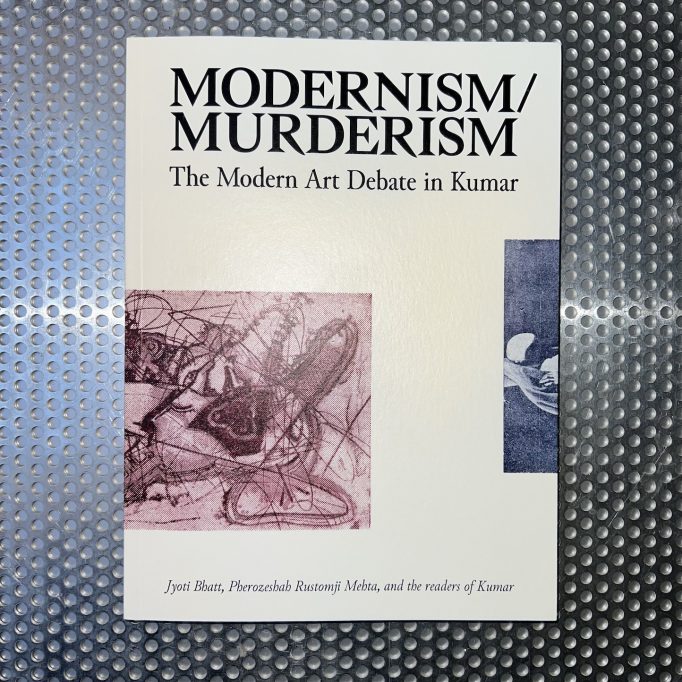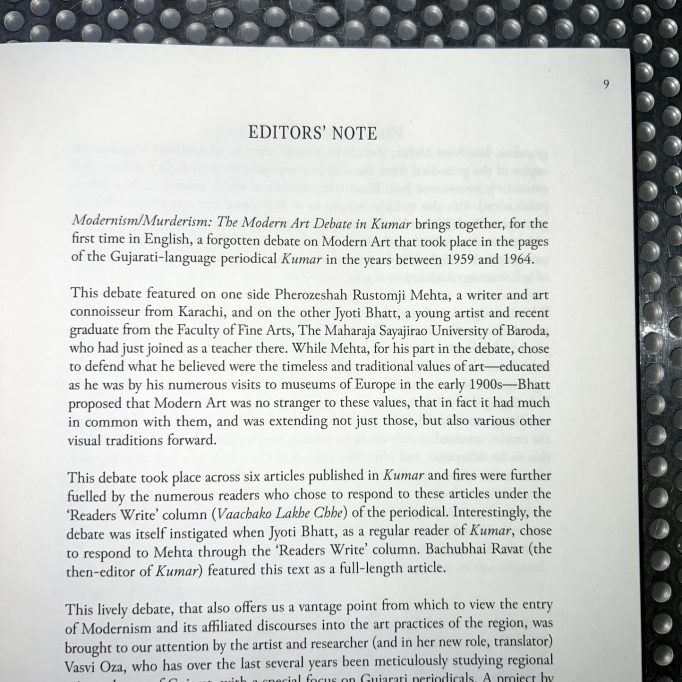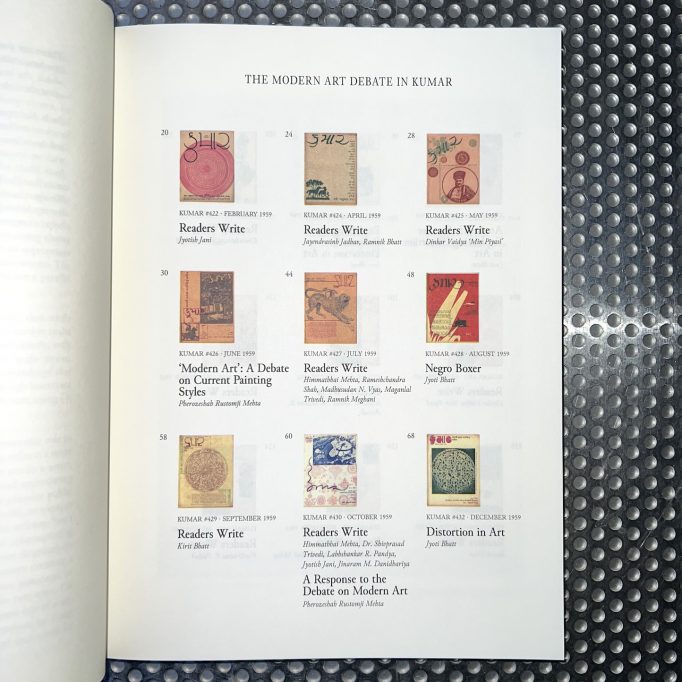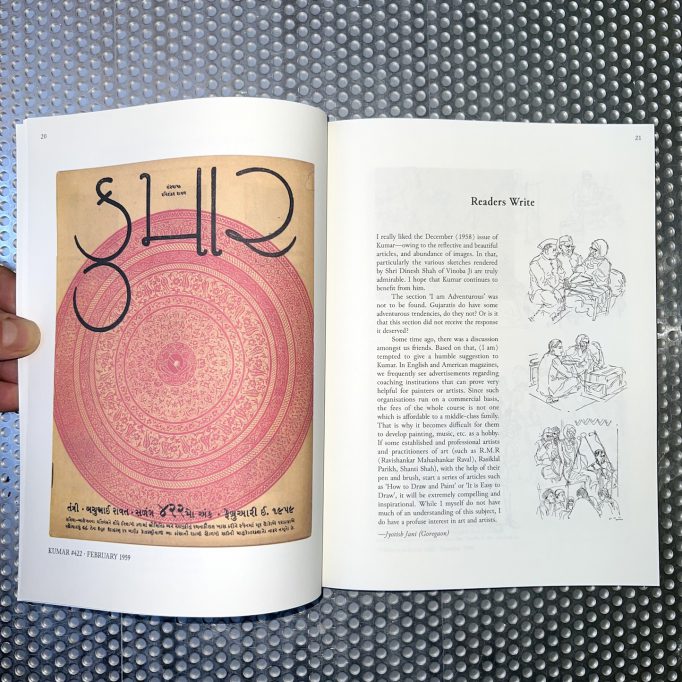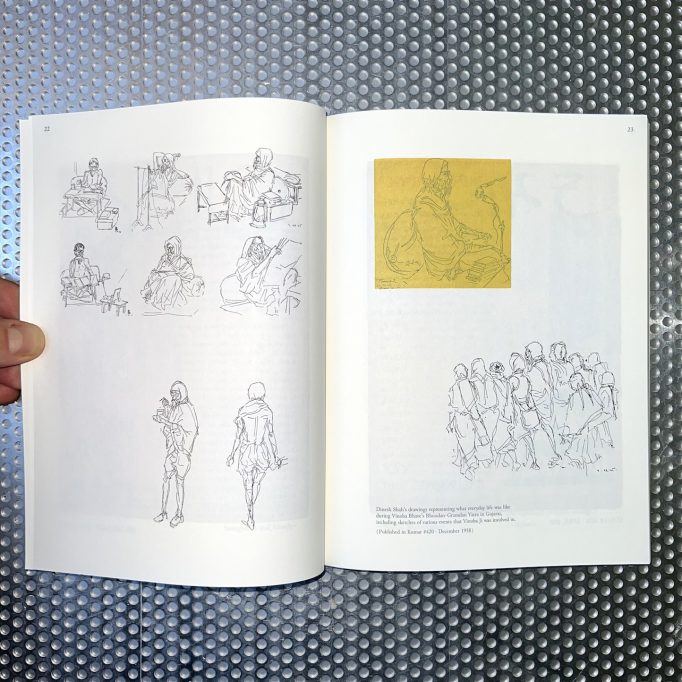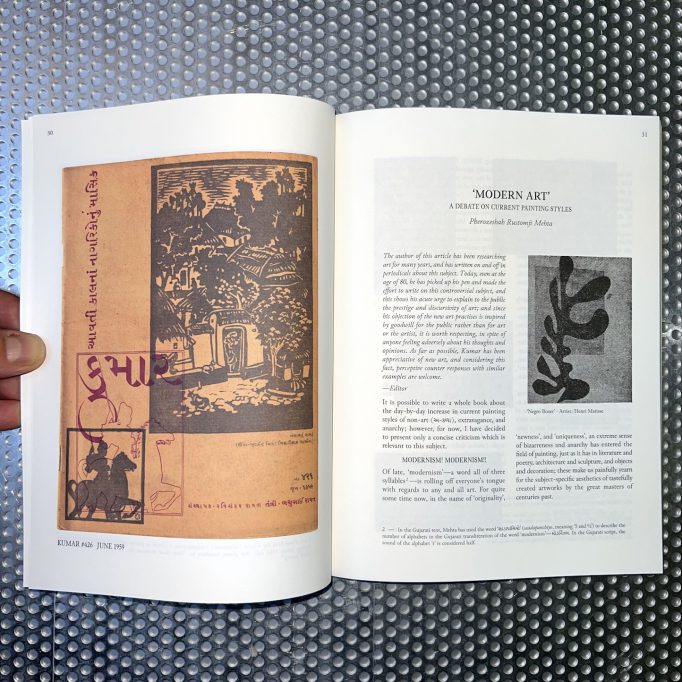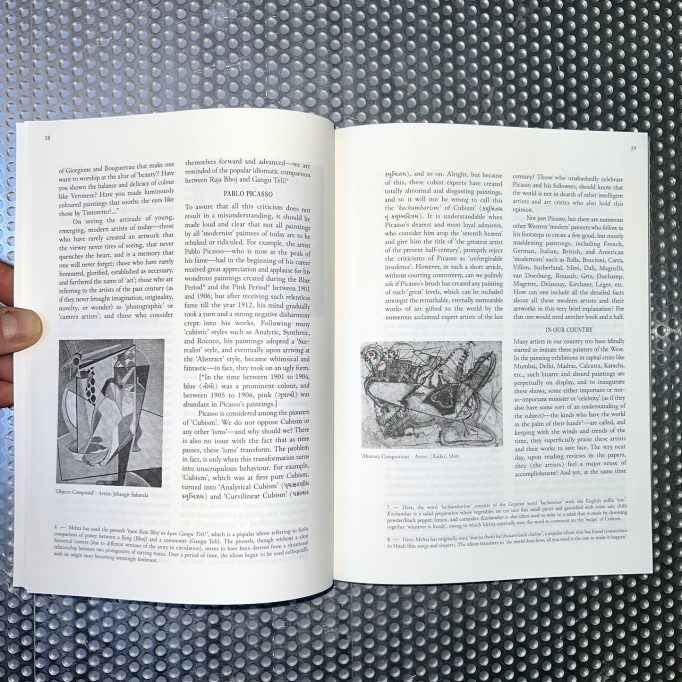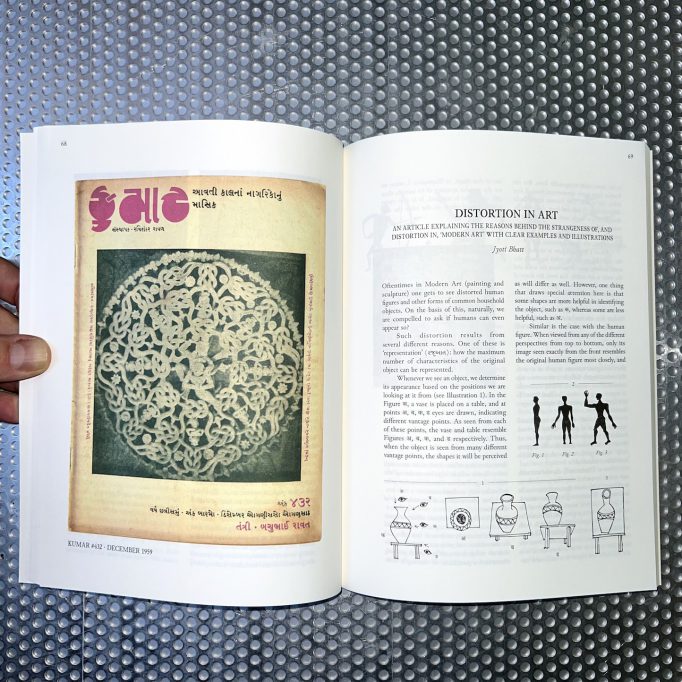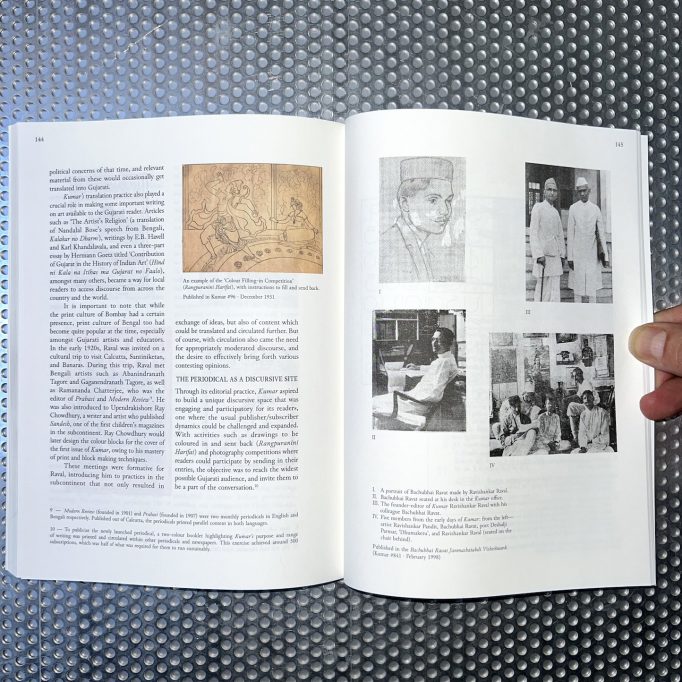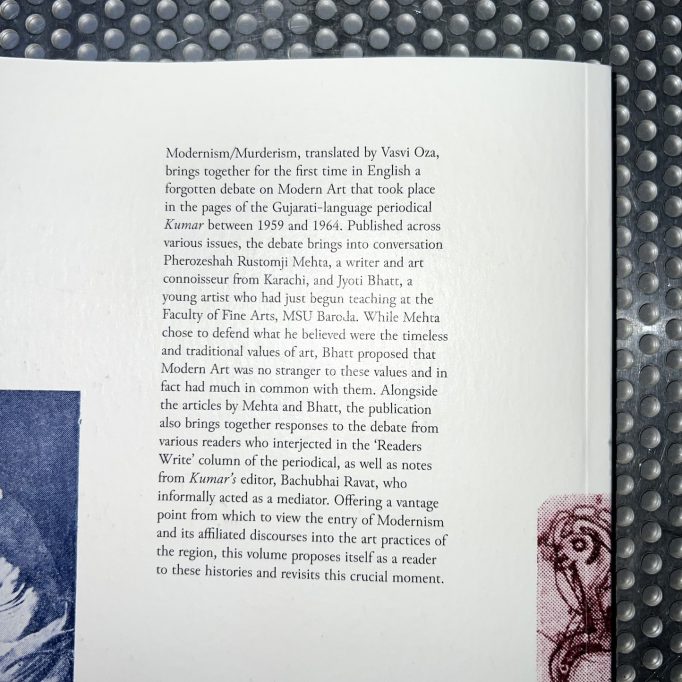Urban Kitsch. Praneet Soi. Reliable Copy; Sharjah Art Foundation
Posted in Uncategorized on January 30th, 2023Tags: Baroda, books, India, Indian economy, Nihaal Faizal, politics, Praneet Soi, Reliable Copy, Sarasija Subramanian, Sharjah Art Foundation, Urban Kitsch, visual culture
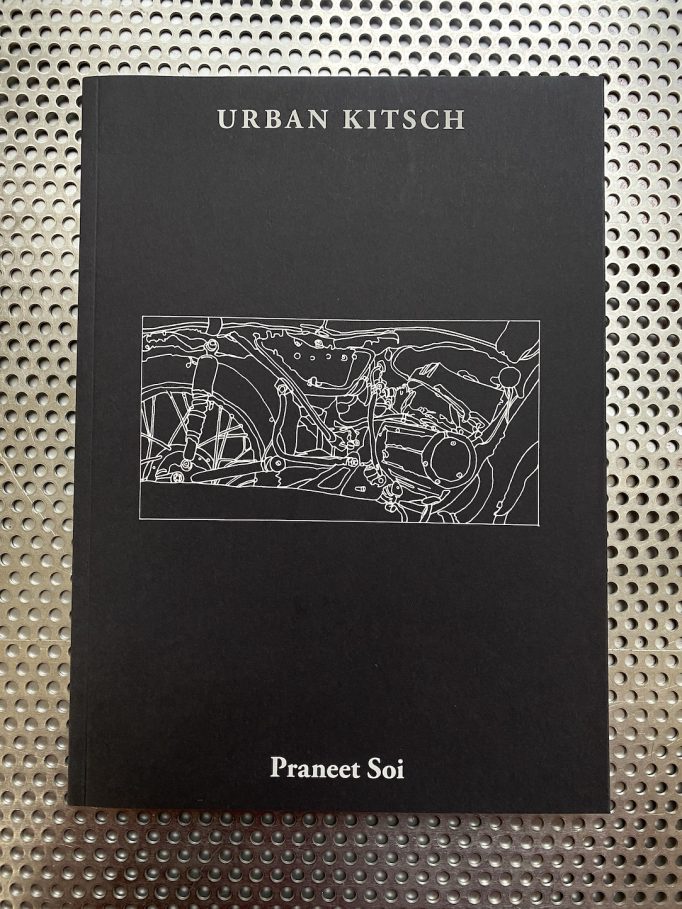
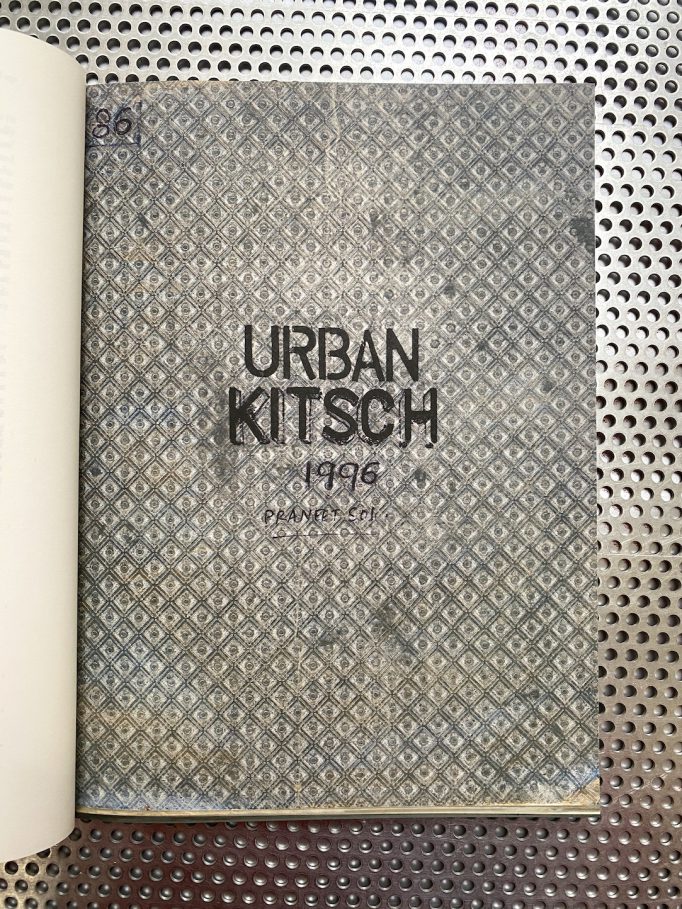
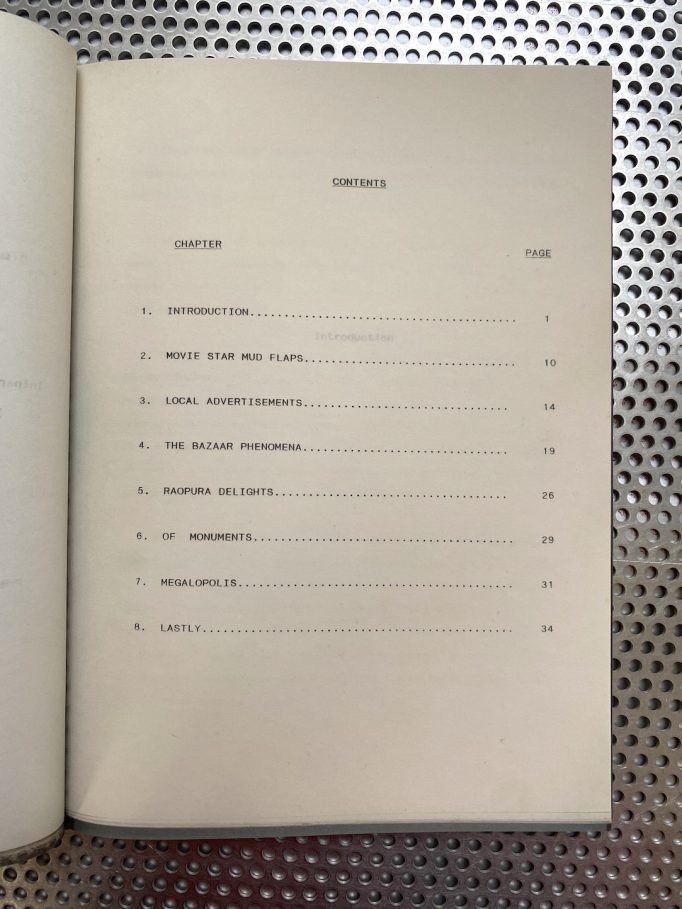
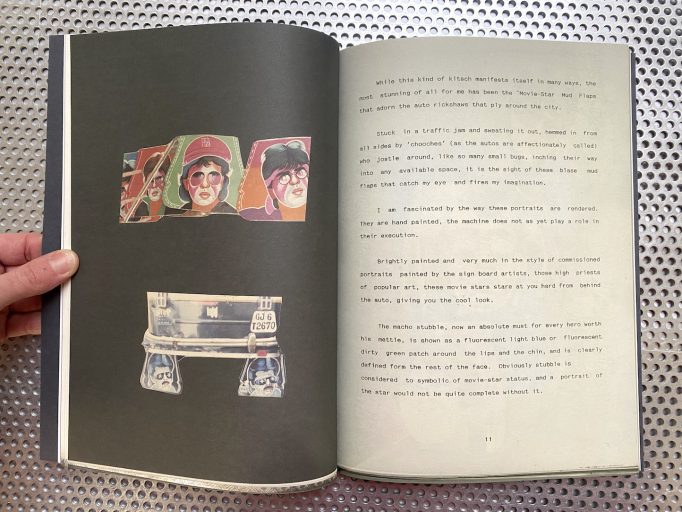
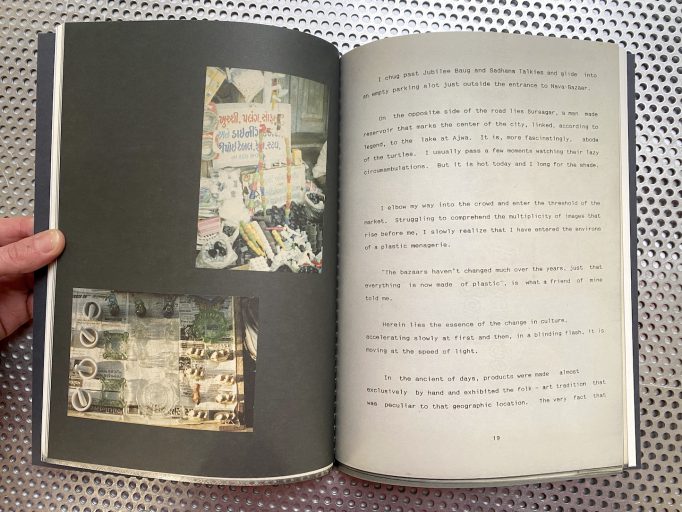
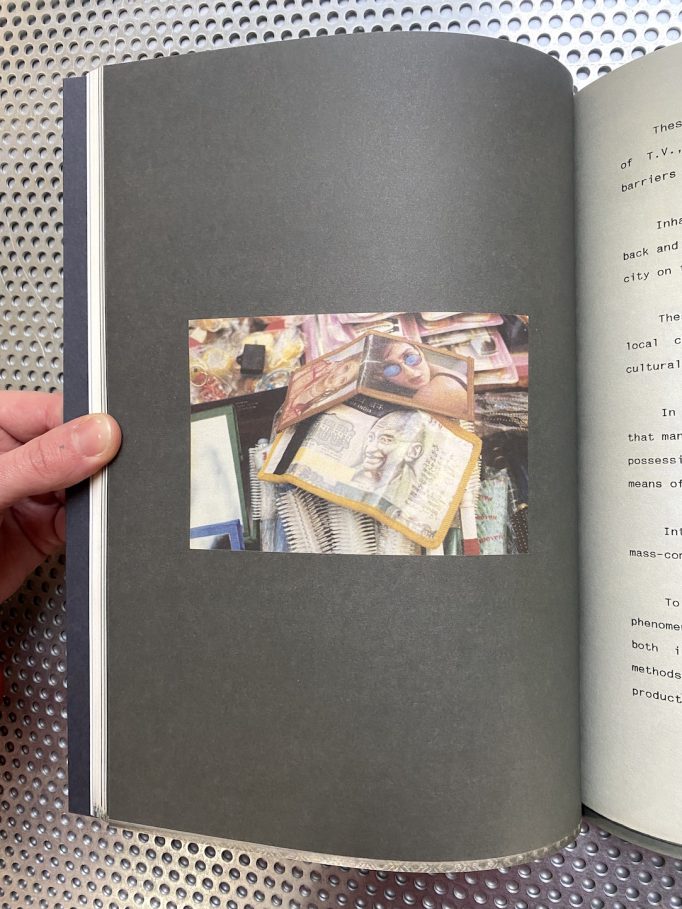
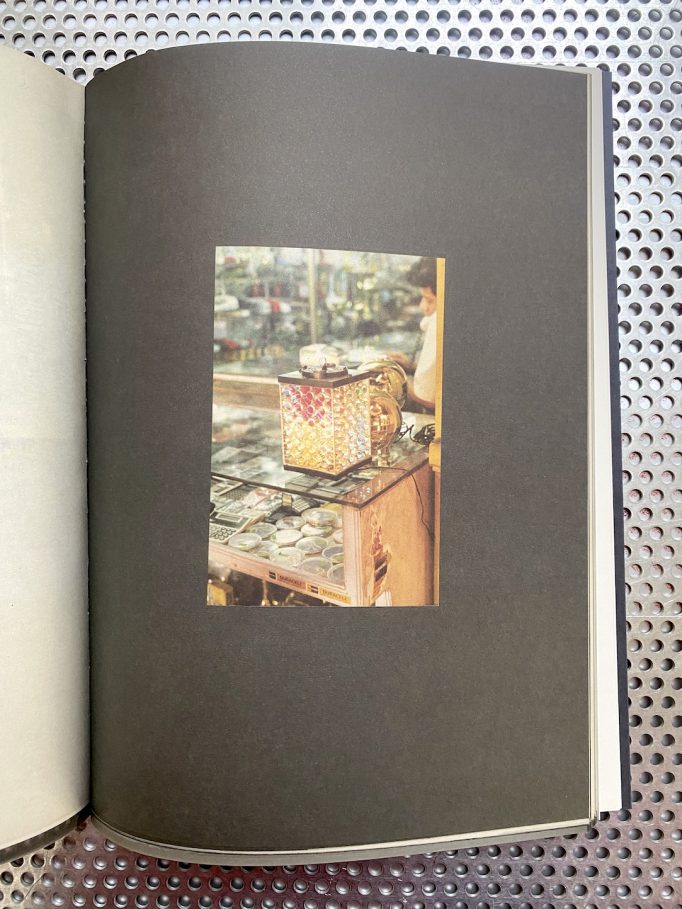
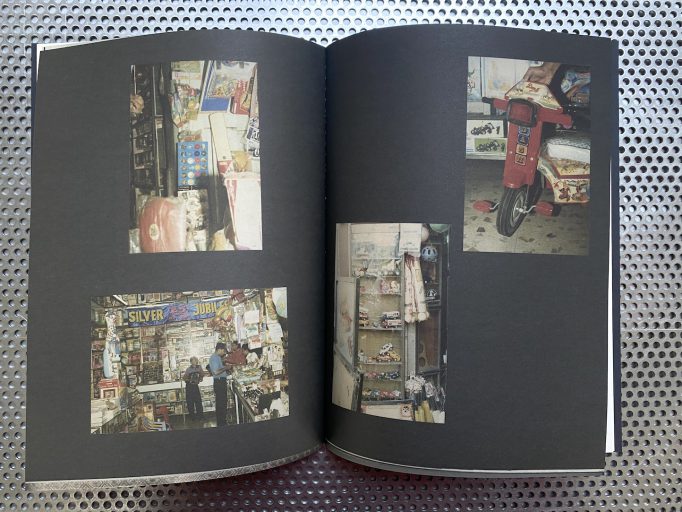
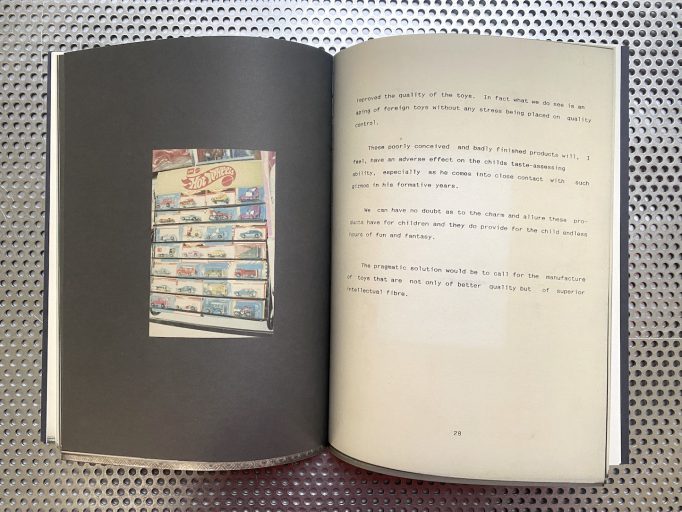
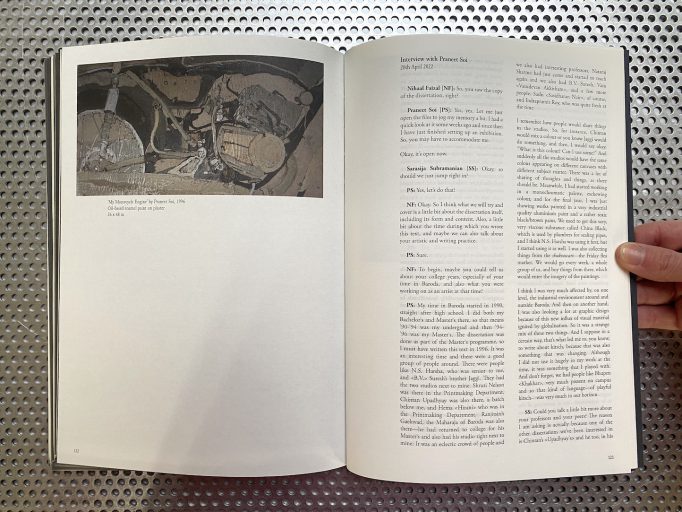
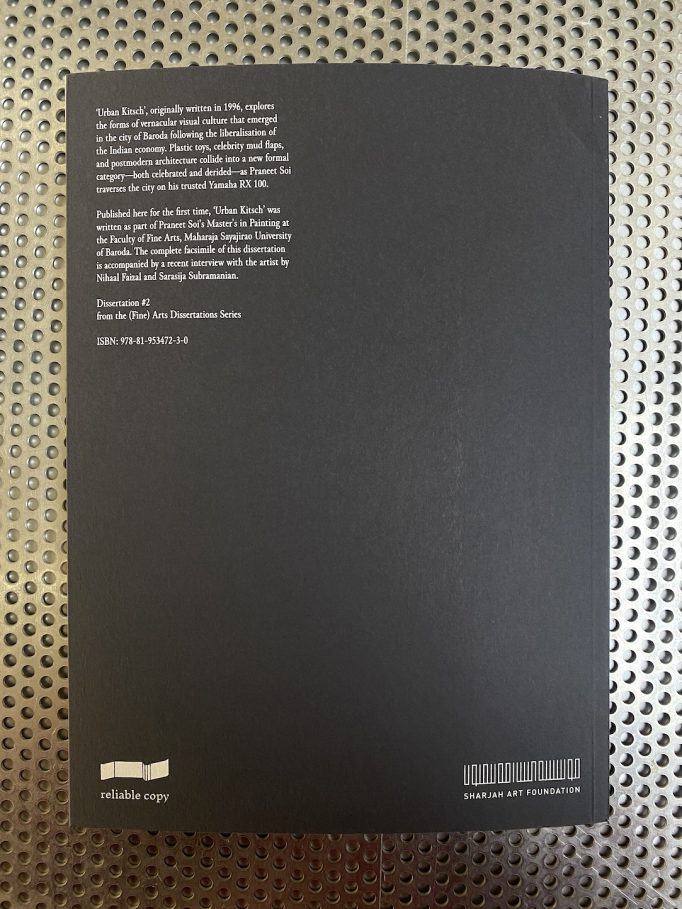
Urban Kitsch, originally written in 1996, explores the forms of vernacular visual culture that emerged in the city of Baroda following the liberalization of the Indian economy. Plastic toys, celebrity mud flaps, and postmodern architecture collide into a new formal category—both celebrated and derided—as Praneet Soi traverses the city on his trusted Yamaha RX 100.
Published for the first time by Reliable Copy and Sharjah Art Foundation, Urban Kitsch was written as part of Praneet Soi’s Master’s in Painting at the Faculty of Fine Arts, Maharaja Sayajirao University of Baroda. The complete facsimile of this dissertation is accompanied by a recent interview with the artist by Nihaal Faizal and Sarasija Subramanian.
Order here

